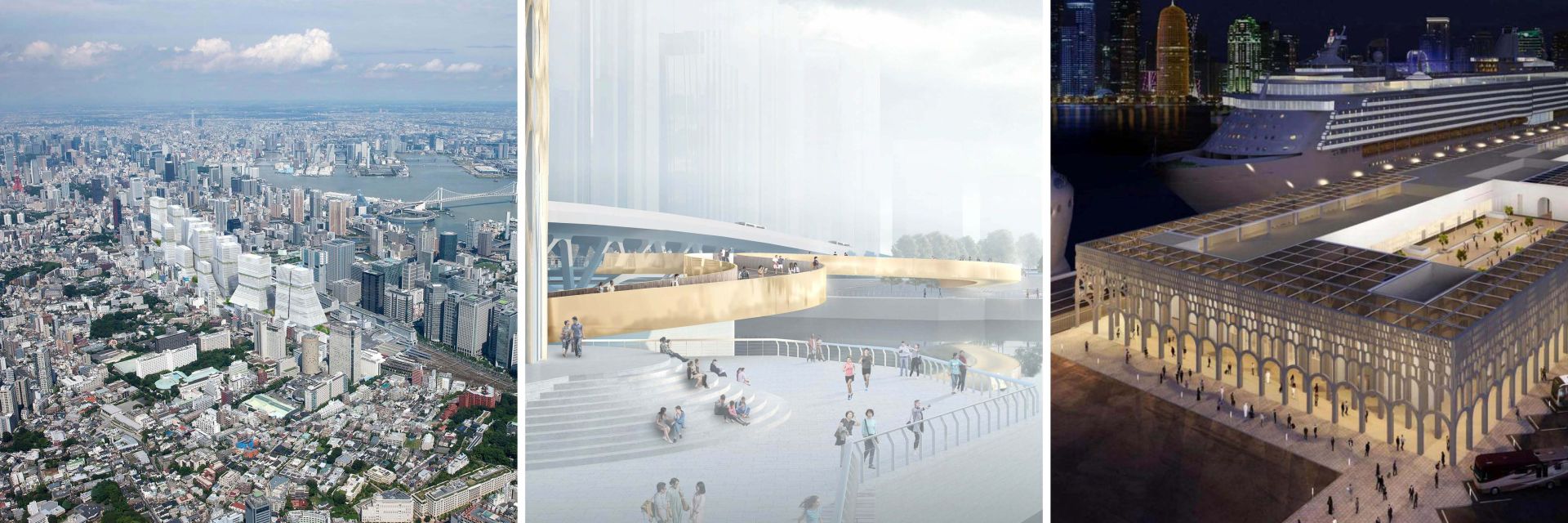Grand Terminal Doha
One of our earliest competition wins, now under construction and due for completion towards the end of 2022 is the new Grand Terminal in Doha, Qatar. With an aesthetic grounded in local heritage references, the building expands on its core function as a cruise terminal with wider potential uses including an events space, aquarium and art gallery. The ability to extract multiple year-round function from the original design brief for a seasonal terminal was key to winning the project.
“Our team re-imagined how a cruise ship terminal could work and how it could do more to contribute to the wider social and cultural dynamic of the city,” says Ashley. “We wanted to understand not only the rich heritage of Doha’s built environment but also how people use the city in the context of the culture and the extreme climate.
“We asked, what if people could use this building for more than just a cruise terminal? What if we could make it a destination in its own right? A surprising, year-round, experience that produced social, cultural and economic value — and just happened to be a port of call in the cruise season?
“We took a risk to stretch the brief and embrace other possibilities.”
Shinagawa Railyards Tokyo
Our master plan to redevelop Shinagawa Railyards answered Japan East Railways’ competition brief to restore Shinagawa’s status as the gateway to Tokyo. We conceived a series of seven statement buildings designed to personify the Seven Lucky Gods, whose temples are synonymous with the area.
Thinking beyond the brief, we wanted to transform the dense infrastructure of the location into a ‘slow city’ — a place where landscape and built form intertwine to create new public spaces where residents and visitors can literally slow down, take a breath and take in the scenery.
Cue the creation of an urban forest, a winter garden, and a garden bridge linking the seven tall buildings like connective green corridors. The result — which we like to describe as a monumental landscape, projects a renewed identity for Shinagawa with the bonus of more open, lush green gardens and public spaces for all.
West Bund Bridge Shanghai
Like a rippling golden ribbon flowing delicately alongside the West Bank of the Huangpu River in Shanghai, our vision for the West Bund Pedestrian Bridge is a functional urban sculpture that connects the city’s people on multiple levels.
There’s the physical connection provided for cyclists and pedestrians between the north and south banks of a river estuary, and the opportunity for social connection via the renewal of the surrounding landscape into a new landmark destination of open space for people to stop, rest and re-charge. And then there’s the connection to the environment; a chance to bring people closer to the waterfront and nature through the bridge’s proximity to the water’s surface — and a central pedestrian deck offering viewpoints across the expanse of the river to the city skyline beyond.
